
Welcome to the second part of the journey through the Way of St. James through Prague. The journey begins from the church of St. Jacob and largely copies the historical route „Royal Route through Prague„, which leads to the center of the capital. We end the journey at the church of St. Jacob in Zbraslav.
Route: Church of St. Jacob – Ungelt – Old Town Square – Small Square – Charles Bridge – Lesser Town Square – Nerudova Street – Hradčanské Square – Loretánská Street – Loretánské Square – Pohořelec – Strahov Monastery – Vlašská Street – Prague Infant Church – Kampa – cycle path along the Vltava from Braník to Zbraslav – Church of St. Jacob in Zbraslav

UNGELT (TÝNSKÝ DVŮR)
Opposite the church of St. Jakub Staršího, you will enter the Ungelt court or Týnský dvůr. The word „tyn“ means a fence, a fenced place. This manor probably dates back to the 11th century, when it served to protect buyers and their goods. There was a warehouse where the goods were stored, so the merchant goods were protected. There were also stables for horses, houses for buyers and a hospital. Thousands of German, Polish, Russian, Hungarian, Venetian, Dutch, French, Greek, Armenian, Turkish and Arabian merchant cars flowed here.
And what could you find in their cars? Gold, spices, jewelry, furs, books, carpets, cattle, birds, live fish, exotic vegetables and fruits. Upon arrival, buyers had to hand over weapons. Everyone who crossed the threshold of the merchant’s court enjoyed the full protection of the king, for which he had to pay a fee. Over time, the protection fee developed into a mandatory duty on goods imported into Prague or passing through Prague, and later on all goods imported anywhere in the Czech Republic. There was a house where goods were weighed and measured and customs duties were calculated. In the evening it used to be fun, buyers drank their shops and told news from distant lands. That is why the name Veselý dvůr is also known.
This customs experienced its greatest glory during the reign of Charles IV. and also during the reign of Wenceslas IV.
GRANOVSKÝ PALACE
The palace is one of the oldest and I think also the most beautiful Renaissance palaces in Prague. Lift your head up and you can see beautiful Renaissance sgraffito and murals depicting scenes from the Bible and Greek mythology.


PETRÁČKOVSKÝ HOUSE
The house is known as Old Ungelt. It is famous mainly for the fact that it used to be one of the oldest inns in Prague.

HOUSE AT THE BLACK BEAR
The house got its name from a statue of a bear on its corner. The U Komárků café used to stand here, where important personalities of Czech history, such as Josef Kajetán Tyl, František Palacký, Pavel Josef Šafařík, František Ladislav Rieger and many others, met.


AT THE GOLDEN RING
The house he Gallery of the Capital City of Prague, which offers visitors an exhibition of 20th Century Art.

AND WHAT CAN YOU FIND IN UNGELT TODAY?
Now there are a number of shops, such as my favorite Botanicus, but you will also find restaurants and hotels, the Ungelt Theater, one of Prague’s small stages.

Take Týnská Street with a slow, lazy step to the Old Town Square.


HOUSE AT THE STONE BELL
As soon as you are at the end of Týnská Street, you will notice the house At The Stone Bell on your right. The house is located on the Old Town Square, next to the Týn Church. The first surviving mention of it dates back to 1310. The origin of the name of this house comes from a stone bell, which was set in its corner.

One legend says that it is a reminder of the entry of John of Luxembourg into Prague in 1310. But perhaps the biggest attraction of the house is that Charles IV himself was born here. When John of Luxembourg and Eliška Přemyslovna arrived in Prague in 1316, the Royal Palace at the Castle was burned down. They probably stayed in this house. Charles IV himself. he probably also stayed here on his return to Bohemia in 1333.

OLD TOWN SQUARE
And you are in the Old Town Square. I could talk about him here. I would do with one big article here. According to many tourists, it is the most beautiful square in Europe. And I think rightly so. And do you know why tourists mostly visit this square? Maybe you guessed it, clearly because of the astronomical clock.
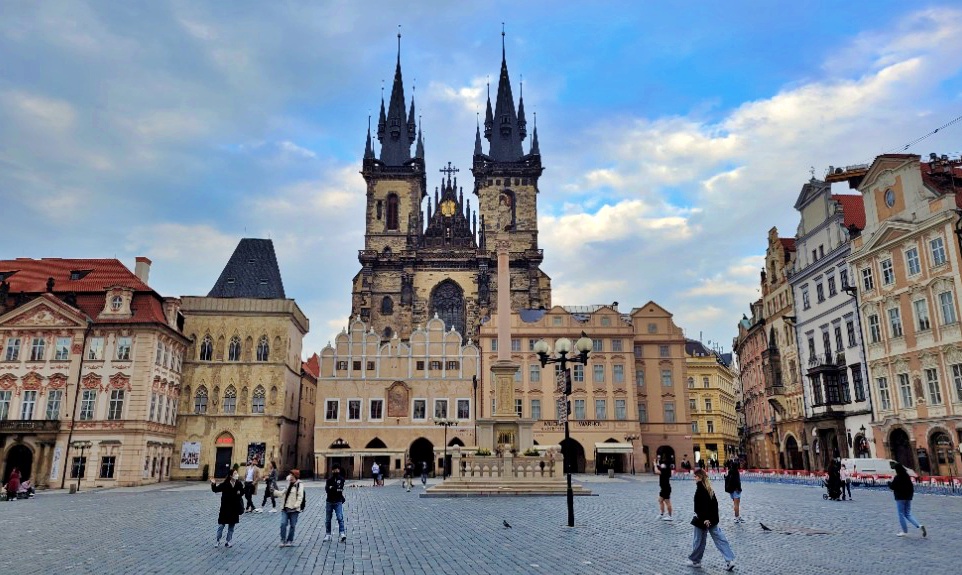
PRAGUE ASTRONOMICAL CLOCK
The first mention of the astronomical clock comes from 1410 and was compiled by the watchmaker Mikuláš from Kadaň, who created it with the help of mathematical calculations by the Prague mathematician and astronomer Jan Šindel. Master Jan Hanuš and Jan Táborský introduced it into the form we know today.

The astronomical clock is not only the apostles, but also note that the astronomical clock is divided into four imaginary floors. Alchemists and astrologers in ancient times believed that the universe is composed of four elements: earth, water, air and fire. And you will find these elements on the astronomical clock layout.

This square is very mysterious and has a very long history. It is such a center of all happenings in Prague and has witnessed many important events. Don’t worry, I won’t burden you with her here. We don’t even have time because we have a long way to go.

SMALL SQUARE
You will continue to the Small Square. It used to be called Little Market Square. Notice the triangular shape. In the middle it stands with a wrought-iron Renaissance grille.

ROTT’S HOUSE
There are beautiful exhibition houses, of which you will definitely be most interested in Rott’s house, where the famous hardware store used to be. The first telephone exchange in Prague was established in Rott’s house in 1882. And also the terminal station of the first line of the Prague pipeline post was introduced here.

Some other houses have beautiful house signs on the facades. The Royal Route from the Old Town towards Prague Castle also passes through the Small Square.

From teh Small square you can get to Charles Bridge via Karlova street.
CHARLES BRIDGE
I could write about Charles Bridge here again for a long time, but since we still have a long way to go, I will at least tell you some interesting thing. It used to be called Kamenný (because it was built of stone) or Pražský (because it was simply Prague :-)). The bridge was built for 45 years, which is more than 16 thousand days. 🙂 According to legend, the masons added eggs to the mortar during the construction to make the bridge stronger. Later surveys did confirm the presence of eggs in the masonry.

STATUE OF ST. JAN NEPOMUCKÝ
The oldest statue of the bridge is a depiction of St. Jan Nepomucký. John was the confessor of Queen Sophia, the wife of King Wenceslas IV. Not wanting to reveal to the king the secret with which the queen had confided in him, he was allegedly tortured and thrown off the bridge.


According to legend, magic numbers are supposed to protect the bridge forever. These numbers were chosen together with astrologers by King Charles IV, because he believed that a carefully chosen moment would bring good luck to the bridge. These odd numbers follow each other when reading from the front and back, and the date and time are hidden in them. Charles IV. thus, he laid the foundation stone of the bridge in 1357, on July 9, at 5:31 minutes. And since the bridge survived several battles and floods, there may be something to this superstition.

As soon as you cross the Charles Bridge, you will reach Lesser Town Square via Mostecká Street.
LESSER TOWN SQUARE
The square is dominated by the church of St. Nicholas, whose turrets can be seen from Charles Bridge. The church was built by Kryštof Dienzenhofer on the site of an old Gothic church. Did you know that the church is considered to be the most artistically significant Baroque building in Prague? You may not have known, because I did not know that during the socialist era there was an STB observatory in the tower.

NERUDOVA STREET
After a tour of the palaces on Malostranské náměstí, you will reach Prague Castle via the charming Nerudová Street. Don’t forget to look at your feet more, look up, because the houses not only in this Prague street have one peculiarity. You will find beautiful house signs on town houses. And if you want to know something about them, read my article Prague House Signs. Did you know that you will find around 265 of them in Prague ?.

HRADČANY SQUARE
Hradčany Square is really breathtaking. From Hradčany Square you will have a wonderful view of Prague’s towers and the red roofs of Lesser Town. It is actually such an entrance area to Prague Castle. It is lined with beautiful exhibition palaces. Here you will find the Archbishop’s, Sternberg, Losenov, Martinický, Tuscan (Thun-Hohenstein), Schwarzenberg and Salm palaces. In three of them, the National Gallery exhibits, one serves the needs of the Ministry of Foreign Affairs. Be sure to check out the palaces, but I want you to focus on such a completely inconspicuous house here.

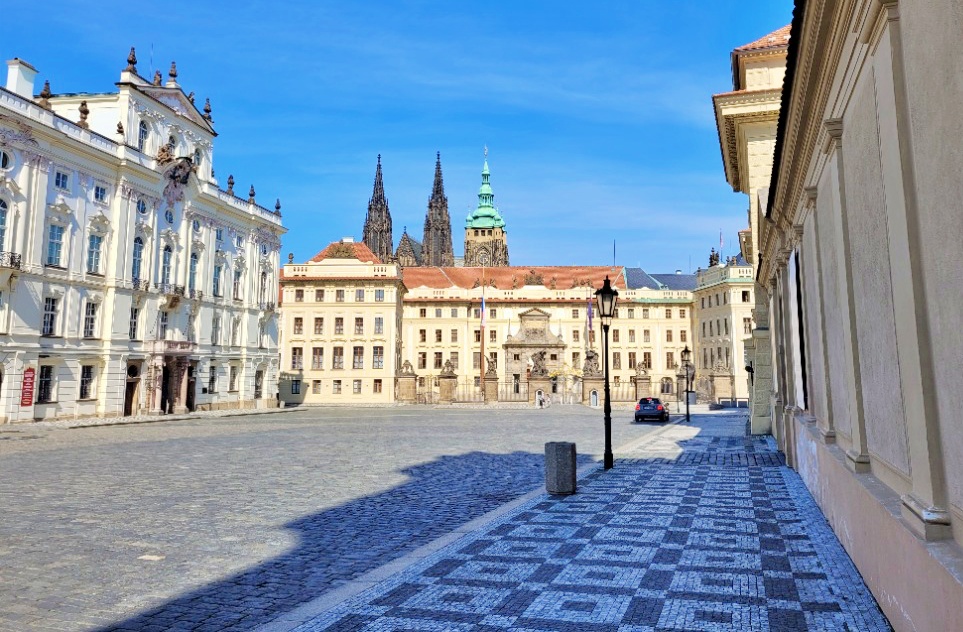

THE FAMOUSE MUCHA’S HOUSE ON HRADČANSKÉ NÁMĚSTÍ – house XVIII.
However, I was not interested in any of the named palaces, but in Mucha’s house. There is definitely a lot to be said about this house. Next to the main facade of the Tuscan Palace, directly opposite the castle gate, stands a small house with a garden. There are several legends associated with the house. It is said that Jan Nepomucký lived in it, and probably that is why its appearance is depicted on the facade. At present, a collection of objects and furniture by Alfons Mucha is installed in the house. You can find, for example, Ema Destinn’s bed, which Alfons Mucha bought when she didn’t have money. It is said that the military leader Albrecht of Wallenstein was murdered in Cheb. But to be in the picture. It was not the famous painter who lived here, but his son Jiří Mucha, a writer, screenwriter and translator. During his stay, lively parties were held here. Artists, intellectuals and contemporary bohemians took turns here. Young girls should not be missing either. The girls who appeared at Mucha’s parties were called „Mucha girls„. Some were even photographed in Mucha’s apartment by the three-time Oscar winner and court photographer of the British royal family Cecil Beaton. His unrestrained parties inspired the American playwright Arthur Miller (yes, he is the husband of Marilyn Monroe) to write the drama The Ceiling of the Archbishop’s Palace.
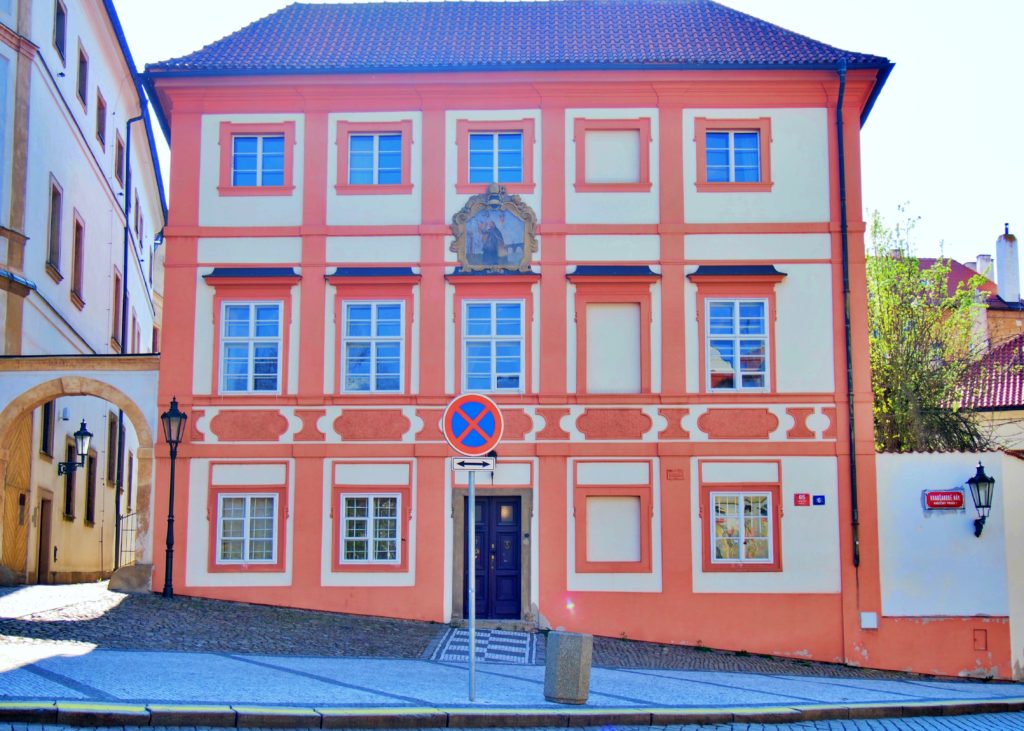
From Hradčany square you will walk nicely along Loretánská Street.
LORETÁNSKÁ STREET
HRADČANY TOWN HALL – no. 173
As one of the few houses, it avoided all disasters and has been preserved to this day in almost its original state. In the 14th century, the castle burgrave Berka of Dubá founded the serf town of Hradčany and Emperor Rudolf II in these places. he promoted it to an independent city. And because every town needs a town hall, this Renaissance house has become it. There is a sgraffito facade with Hradčany and imperial emblems, which are still recognizable today.

Above the portal is the entrance gate with the inscription Old Town Hall.

Vítězslav Vejražka, an important Czech theater and film actor, used to be one of the inhabitants of the house.
LORETA SQUARE
Loretánská Street will take you to Loretánské Square.

AT THE BLACK OX
This famous Old Bohemian pub is located on Loreto square, and it is as if time has stopped in it. The Association for the Preservation of At the Black Ox Inn has been managing this cult pub for decades. The pub as we know it today was opened in 1965 and since then the famous Velkopopovický Kozel has also been served here. Inside the house is a hall with a vaulted ceiling, painted with coats of arms and full of oak tables and benches. During the First Republic, more precisely since 1905, the innkeeper Josef Brinda worked here, who was famous for addressing guests with core nicknames and titles. His habit was that the guest was not allowed to hand him an empty pint. He only carried him if he was lying on a table and on a beer mat. Pivnice starred in the film „Adéla hasn’t had dinner yet„.

Above the gate on the stucco facade is a fresco painted by St. Luke, an evangelist and patron saint of painters, the Virgin Mary with Jesus.

LORETA
Opposite you will find Loreta with a carillon and a copy of the supposed house (Santa Casa) of the Virgin Mary. It is a place of pilgrimage. At the lower end is the Capuchin monastery, which provides accommodation for pilgrims.


POHOŘELEC
Continue through Pohořelec to the Strahov Monastery. In the house At the Golden Tree there is a passage directly to the Strahov Monastery.
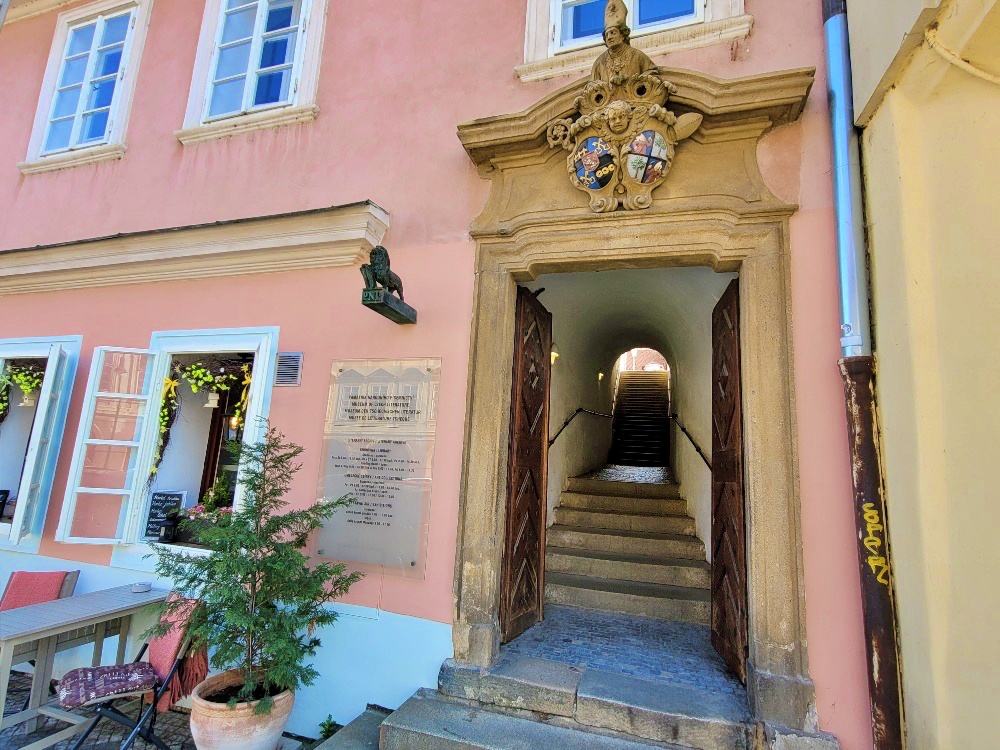
STRAHOV MONASTERY
The Strahov Monastery belongs to the Premonstratensian Order. The monastery was founded in 1140 by the Czech prince and future king Vladislav II. Personally, I really like the monastery library here, which is one of the most valuable and best-preserved historical libraries not only in the territory of our republic. More than two hundred thousand books are stored here, of which over three thousand are manuscripts.



PRAGUE ITALY
When you stand with your back to the facade of the monastery, you will have a wonderful view of Prague and you can either go to Petřín, or go down the slope and join Vlašská Street.



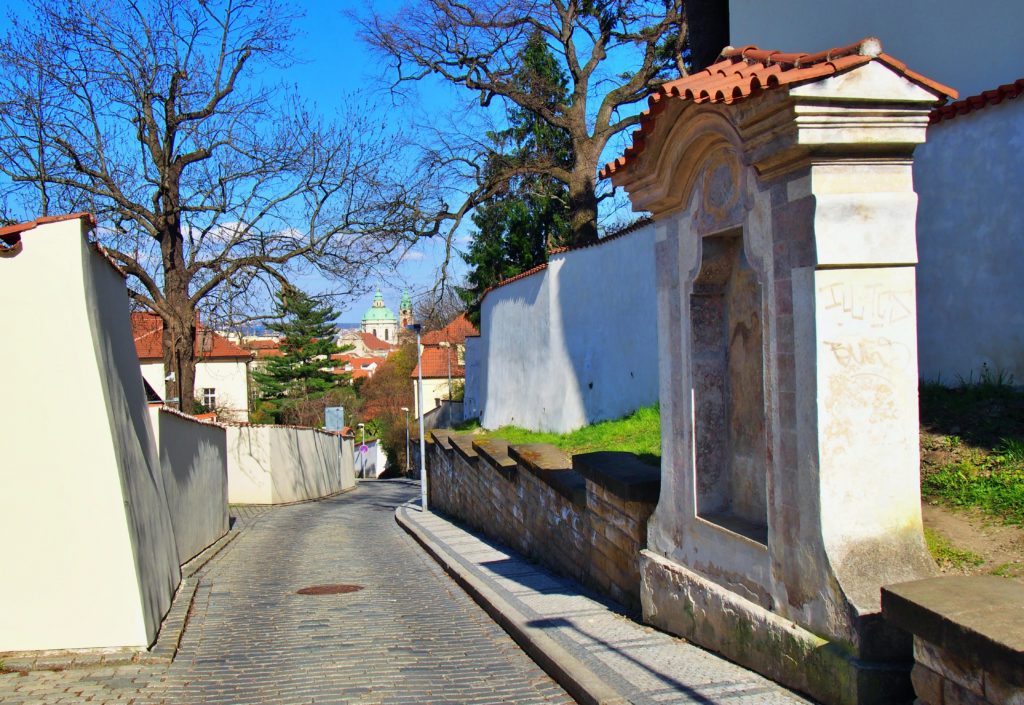


Here you will find yourself in places in Prague Italy. If you are interested in why this place is called Prague Italy, you can find more in the article – Discover Prague Italy and the mysterious Jánský Vršek.
CHURCH OF THE INFANT JESUS OF PRAGUE
You will then get to Újezd Street to the Church of Our Lady Victorious (Church of the Infant Jesus of Prague).

As the name suggests, the church houses a famous statue of the Infant Jesus of Prague. It is known in Catholic countries as Bambino di Praga. In the middle of the 16th century, the statue was brought to Bohemia by the bride of Wrocław of Pernštejn, Maria Maxmilián Manriquez de Lara. Later, she dedicated the statue to her daughter Polyxena to marry Vilém of Rožmberk to protect the family fireplace. And Polyxena donated it to the Carmelite Order.


The statuette is 45 cm high, the inside is covered with canvas and covered with wax. The infant uses 2 crowns and about 46 dresses, which, according to ancient custom, alternate 10 times a year depending on the period. E.g. It is white on Easter, red on White Sunday, purple on Advent, etc. A small museum was built here from clothes and other religious objects. Be sure to visit it, because it’s really very nice.

KAMPA
From the church, take Harantova Street through Maltézské náměstí in Kampa.
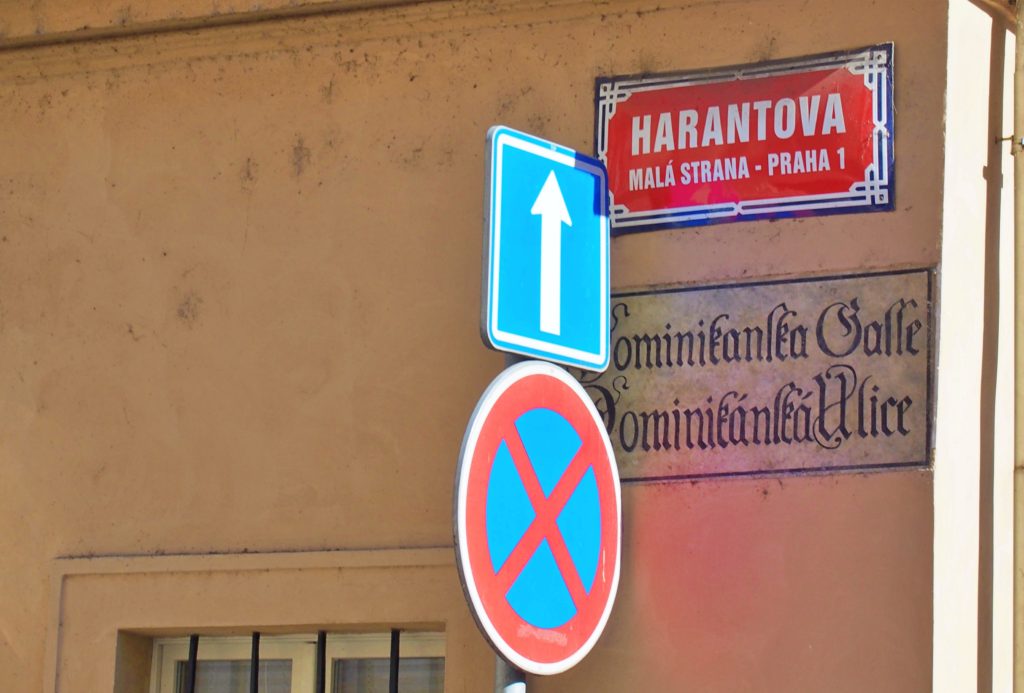
Kampa is a fairy tale, so I will dedicate a separate article to it (coming soon :-).

You will cross the Vltava over the Legion Bridge to the National Theater. You will leave the city along the waterfront against the Vltava. On the right side you will pass Vyšehrad, walk around Yellow Spa and slowly leave the center of Prague.







BICYCLE PATH ALONG THE VLTAVA FROM BRANÍK TO ZBRASLAV
The cycle path, which is part of the Vltavská cycle route, leads along the right bank of the Vltava through the southern parts of Prague, namely Braník, Hodkovičky, Modřany, Komořany to the bridge in Zbraslav. On the route you will find not only cyclists, especially families with small cyclists, but also in-line skaters. So watch the road!



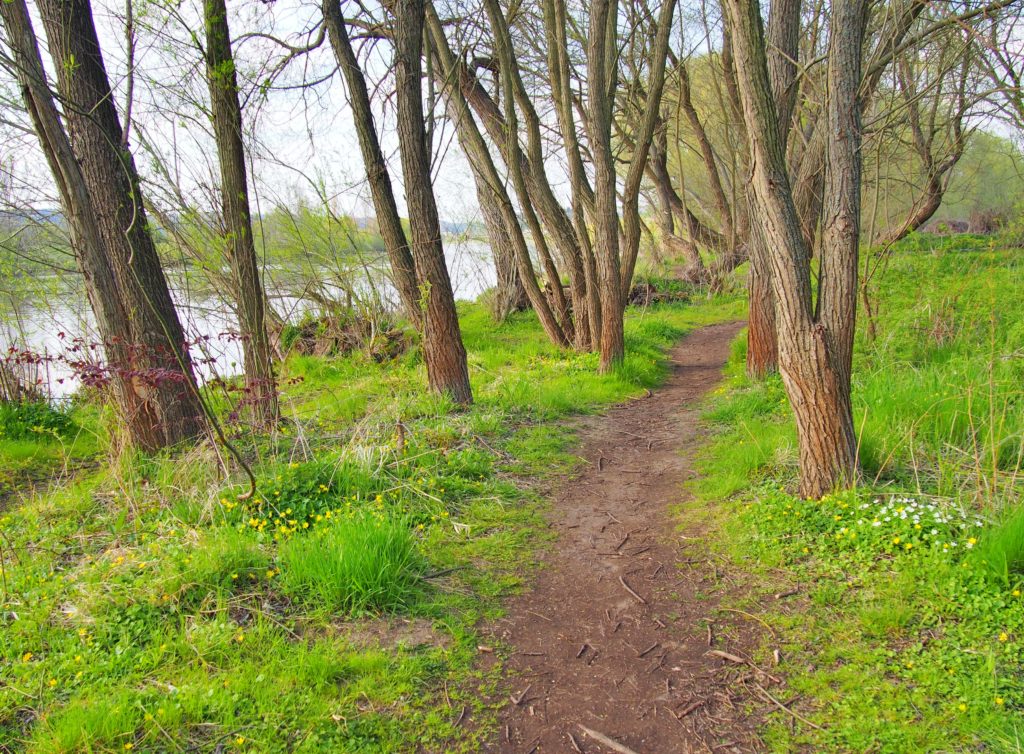





You will walk along the banks of the Vltava and connect to the tourist signs, where the St. Jacob’s Shell is located. You will find it here, unfortunately you will not find any along the entire route. This marking leads to Karlštejn, where the routes to Všerubská and Železná are divided.

ZBRASLAV
In Zbraslav our goal is the church of St. Jacob where you will find the tombs of Wenceslas II, Eliška Přemyslovna and other Přemyslids.
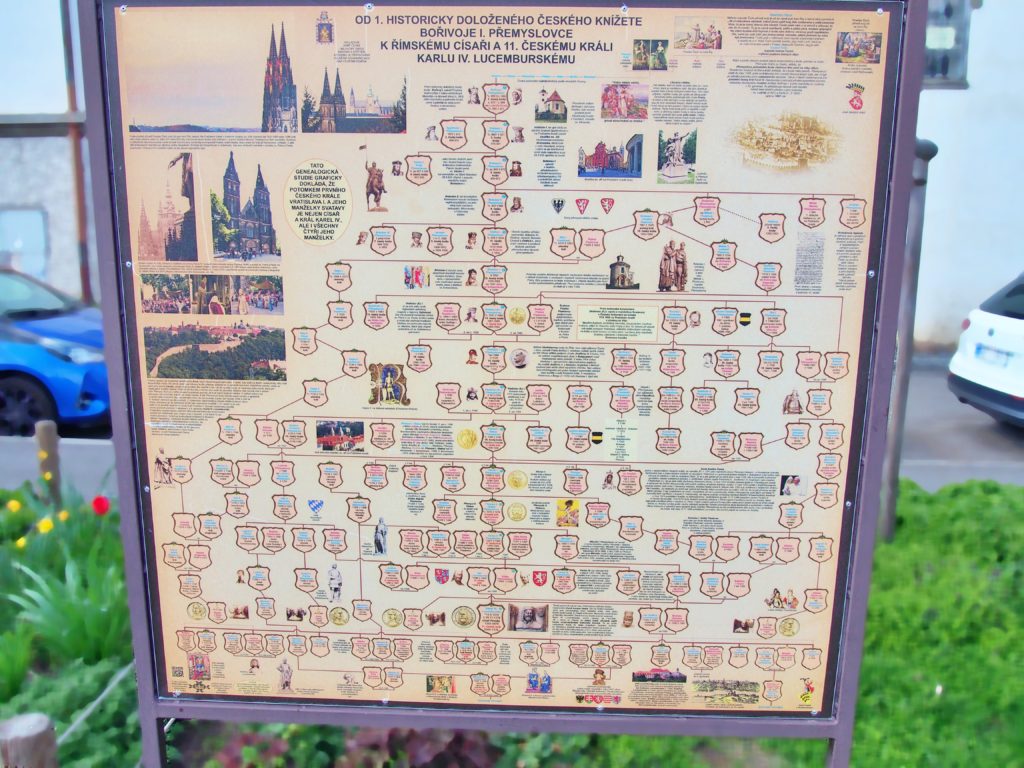
Inside you will find a painting of the Madonna of Zbraslav, paintings by Karel Škréta and Petr Brandl. A Cistercian monastery founded in 1292 by King Wenceslas II once stood on the site of Zbraslav Castle. After the abolition of the monastery, it was transformed into a castle, but you can only see it from the outside. It is not open to the public.
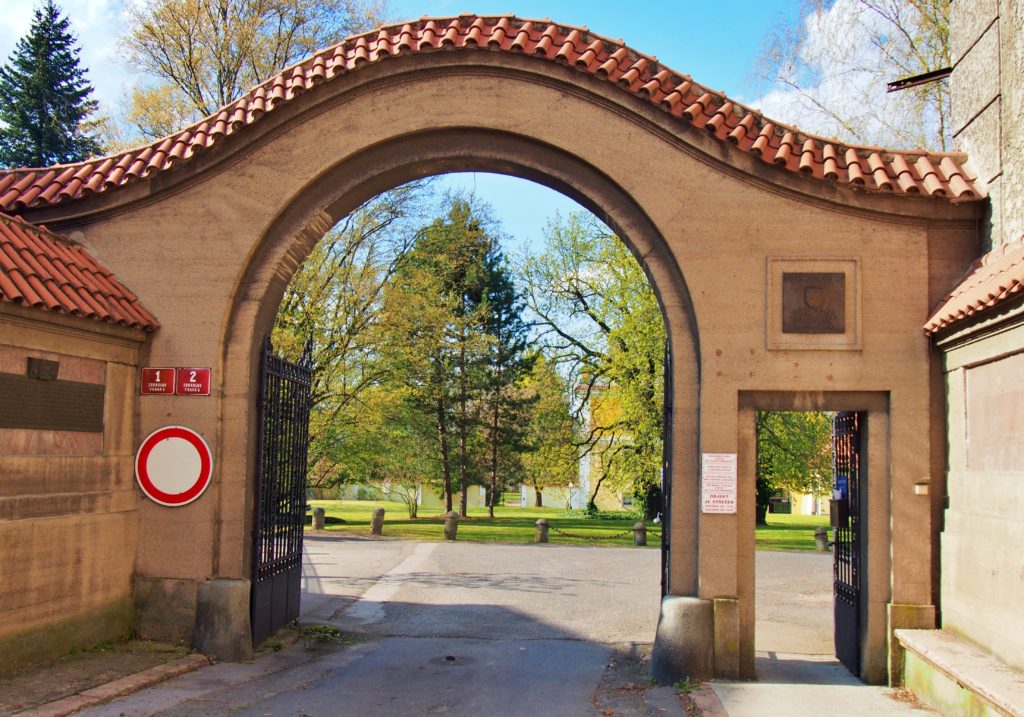
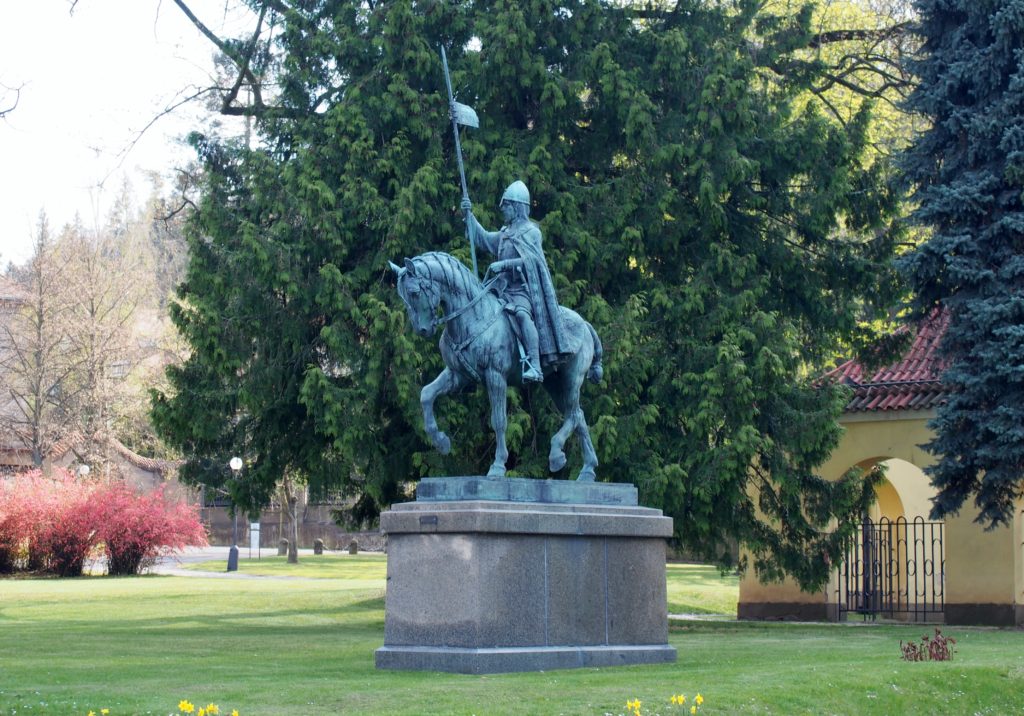


MAP
If you liked the article, I’ll be happy if you share it or leave a nice comment below the article. I would also like to invite you to join me at Instagramu a Facebooku.
My steps can follow in the previous article:

